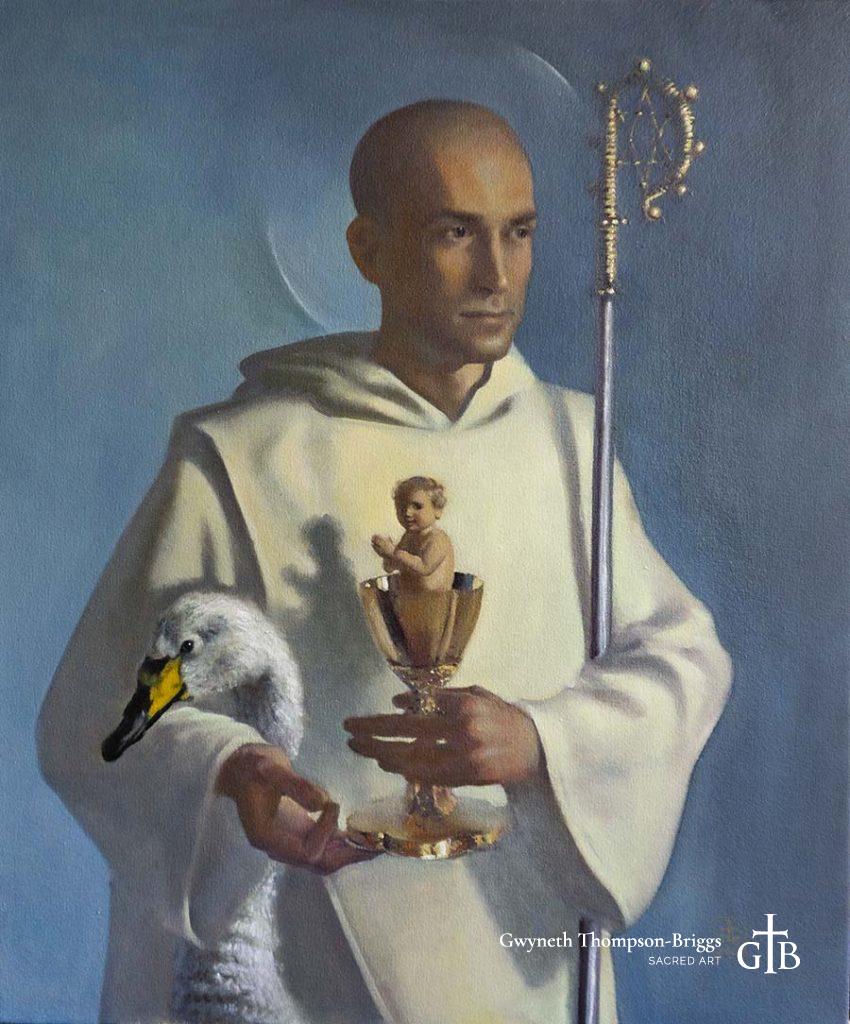This is how sacred artist Gwyneth Thompson-Briggs sums up her new painting of St. Hugh of Lincoln, the 12th century Carthusian monk who was plucked from the obscurity of the Grande Chartreuse to become bishop of Lincoln and advisor to the Plantagenet kings Henry II and Richard Cœur de Lion. Gwyneth designed the painting to capture what she sees as the essence of St. Hugh.
“I think he was essentially a Carthusian monk who would have preferred to remain obscurely at prayer in the monastery, but a monk whose natural talents and fidelity to the divine will led him to the fruitful exercise of high spiritual and temporal authority,” Gwyneth says. In her reading, St. Hugh’s life might be divided into two phases or movements.
First there was the movement toward an ever more radical abandonment of the world to know only “Christ, and him crucified” (1 Cor 2:2). After living first in the world, then with his father among Augustinian canons regular, Hugh became a Benedictine novice at fifteen, rising to become prior of a monastery. Soon after, when Hugh was in his thirties, he discovered the Carthusian Order. Founded by St. Bruno in 1084 in a remote Alpine valley, the Order combines the eremitical and the cenobitical versions of monasticism. As a Carthusian choirmonk, Hugh would have lived out the Order’s motto—Stat crux dum volvitur orbis (the Cross stands steady while the world turns)—by singing Matins, Lauds, the conventual Mass, and Vespers in common, and spending the rest of the day alone in his cell praying the Office, meditating, studying, and tending a small garden. (Read more.)
Restoring Carmel in England
1 day ago


















No comments:
Post a Comment